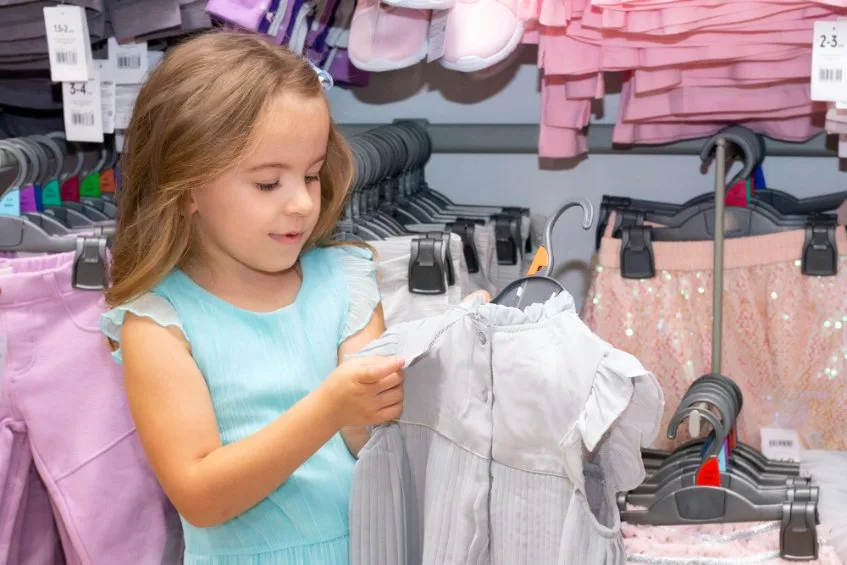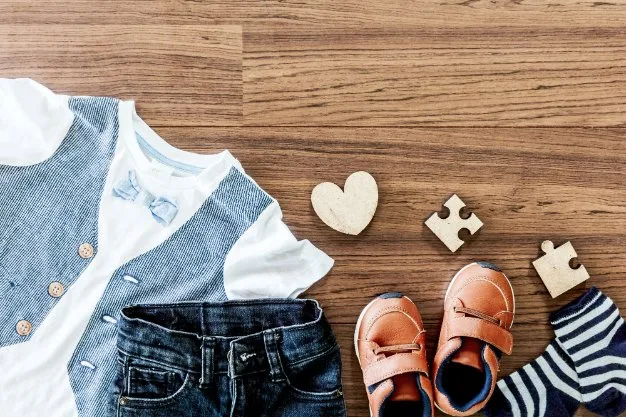Your comprehensive guide to toddler clothing sizes, safety standards, international sizing conversions, and seasonal considerations
Table of Contents
- Understanding Toddler Clothing Sizes
- Maximum Size for Toddler Clothes
- Detailed Size Breakdown (2T-5T)
- International Sizing Conversions
- Safety and Compliance Standards
- Seasonal Sizing and Layering
- Growth and Comfort Guidelines
- Brand Variations and Shopping Tips
- Size Progression: From Preemie to Kids
- Troubleshooting Common Sizing Problems
- Frequently Asked Questions
- Conclusion
Understanding Toddler Clothing Sizes
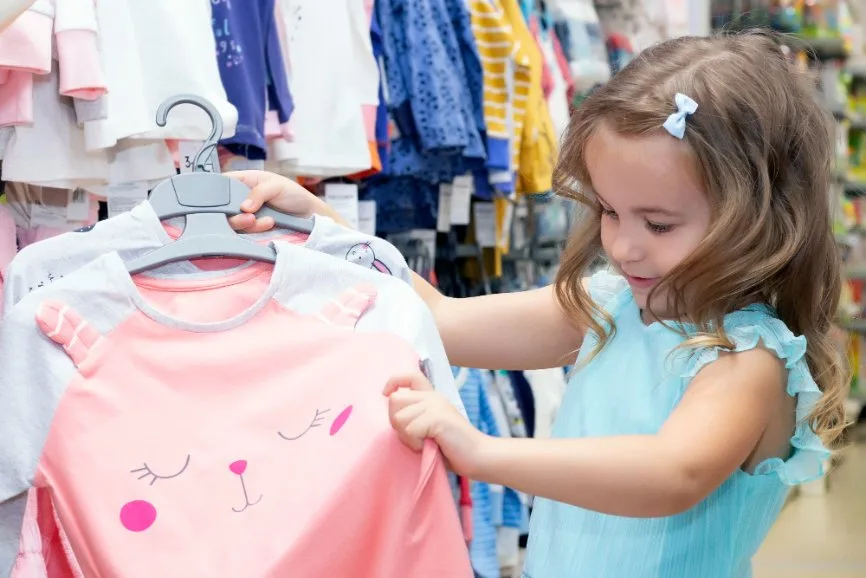
Finding the right size for toddler clothes can feel overwhelming with so many options and brands available. Most toddler clothing sizes range from 2T to 5T, with some brands offering up to 6T before transitioning to standard kids’ sizes. Understanding how these sizes work saves time, money, and frustration when shopping for active toddlers.
What Defines Toddler Sizes
Toddler clothing sizes are labeled with a “T” (like 2T, 3T, 4T, 5T) to indicate they’re specifically designed for toddlers who are learning to walk and have more active bodies. The biggest difference in these sizes is the fit – toddler clothes allow more room around the diaper area since most children in this stage may still be in diapers or training pants.
Key Differences Between Infant, Toddler, and Kids Sizes
Infant Sizes (0-24M)
- Based on months (0-3M, 3-6M, etc.)
- Designed for babies who spend most time lying down
- Slimmer and shorter proportions
- Easy access for diaper changes
Toddler Sizes (2T-5T)
- Based on age with “T” designation
- Extra room for diapers and movement
- Shorter sleeves and legs than kids’ sizes
- Designed for standing, walking, running
Kids Sizes (4-16)
- Regular numbered sizes without “T”
- Slimmer fit with no diaper room
- Longer proportions for taller children
- Assumes child is fully potty trained
How Age Relates to Clothing Size
Age provides a starting point for choosing toddler clothing sizes, but not every child grows at the same rate. The size numbers often match the average age the size fits – for example, 2T usually fits a 2-year-old, 3T fits a 3-year-old, and so on.
| Size | Typical Age Range | Height (inches) | Weight (pounds) | Key Developmental Stage |
|---|---|---|---|---|
| 2T | 18 months – 2.5 years | 32-34″ | 25-28 lbs | Walking confidently, may still wear diapers |
| 3T | 2.5 – 3.5 years | 35-37″ | 28-32 lbs | Running, climbing, potty training |
| 4T | 3.5 – 4.5 years | 38-40″ | 33-36 lbs | Pre-school age, more independent |
| 5T | 4.5 – 5.5 years | 41-43″ | 37-42 lbs | School-ready, mostly potty trained |
Always check both age and measurements when selecting sizes. If a child is tall or heavy for their age, use those measurements instead of just going by age. Many size charts for toddlers include columns for age, height, and weight to help parents make the best choice.
🔧 Helpful Sizing Tools
Use our toddler size comparison tool to compare measurements across different brands and find the perfect fit for your child.
Maximum Size for Toddler Clothes
Toddler Size Progression
Starting Size
Most Popular
Pre-School
Largest Standard
Kids’ Sizes
What’s the Biggest Size in Toddler Clothes?
The largest standard size for toddler clothes is 5T. This size is designed for toddlers who are about 42-44 inches tall and weigh between 38-42 pounds. Size 5T maintains the toddler’s body shape considerations, providing extra room for diapers and usually having shorter legs and arms compared to kids’ sizes.
What size does toddler clothing stop? Most brands stop toddler sizing at 5T, though some offer 6T as an extended option. After 5T, children transition to regular kids’ sizes.
Standard Maximum
Available in most brands
Extended Option
Some brands offer this
Kids Transition
First regular kids’ size
Transition to Kids’ Sizes
What comes after 5T in toddler sizes? After size 5T, there is a shift to kids’ sizes. The first size in the kids’ range is usually size 4, 5, or 6, depending on the brand. Unlike toddler sizes, kids’ sizes start to remove extra diaper space and provide a more fitted shape.
Key Differences: 5T vs Size 6
- 5T: Toddler cut with diaper room, shorter proportions
- Size 6: Kids’ cut, slimmer fit, longer arms and legs
- Height: Size 6 fits taller children (45-47 inches vs 41-43 inches)
- Weight: Size 6 accommodates 42-48 pounds vs 37-42 pounds for 5T
Kids’ size 6 is most common right after 5T. If a child outgrows 5T and no longer wears diapers, moving to size 6 or “XS” in kids’ sizes is the next step. Some brands overlap with sizes like 5/6 or XS/Small, so checking the brand’s size guide is essential.
📊 Track Your Child’s Size Progression
Use our toddler size transition tracker to monitor when your child moves from toddler to kids’ sizes and plan your wardrobe purchases accordingly.
Detailed Size Breakdown (2T-5T)
Understanding Each Toddler Size
The “T” in these sizes stands for toddler, and each number shows the average age the clothes should fit. However, every child is different, so measurements matter more than age.
2T: The Starting Point
What age does 2T fit? Size 2T usually fits kids around age 2 who have moved out of most baby clothes. This size bridges the gap between infant and toddler clothing.
3T: The Most Popular Size
Is 3T for 3 year olds? While 3T is designed with 3-year-olds in mind, it’s made for most 3-year-olds with features to fit toddlers who may still be wearing diapers. However, a tall 2.5-year-old or petite 4-year-old might also wear 3T.
4T: Pre-School Ready
Is 4T the same as 4 years? Size 4T fits many 4-year-olds and is a common step before children’s size 4. However, 4T maintains toddler proportions while regular size 4 has a slimmer, longer cut.
5T: The Final Toddler Size
Is 5T the same as XS? Not exactly. 5T is often the largest toddler size before switching to regular kid sizes, but 5T and XS have different cuts. 5T maintains toddler proportions while XS kids’ is longer and slimmer.
| Size | Height | Weight | Chest | Waist | Inseam |
|---|---|---|---|---|---|
| 2T | 32-34″ | 25-28 lbs | 20-21″ | 19.5-20″ | 14-16″ |
| 3T | 35-37″ | 28-32 lbs | 21-22″ | 20-20.5″ | 16-18″ |
| 4T | 38-40″ | 33-36 lbs | 22-23″ | 20.5-21″ | 18-20″ |
| 5T | 41-43″ | 37-42 lbs | 23-24″ | 21-21.5″ | 20-22″ |
Common Sizing Questions Answered
What is the difference between 18-24 and 2T? While both fit similar age ranges, 18-24 months is considered a baby size with a slimmer fit, while 2T is cut with more room for diapers and active play. The proportions are slightly different, with 2T being wider through the body.
How long do kids wear 2T? Most children wear 2T for 6-12 months, depending on their growth rate. Fast-growing children might outgrow it in 4-6 months, while slower-growing children might wear it for over a year.
How long do kids wear 4T? Similar to other toddler sizes, most children wear 4T for about 6-12 months. This varies significantly based on individual growth patterns and body type.
International Sizing Conversions
Shopping for toddler clothes from international brands requires understanding different sizing systems. While US, UK, and Australian sizes are typically age-based, European sizes use height measurements in centimeters.
International Sizing Systems
Age-Based: US, UK, Australia use child’s age
Height-Based: Europe uses height in centimeters
Size Variations: Asian brands often run smaller
| US Size | UK Size | EU Size (Height cm) | Age Range | Height Range |
|---|---|---|---|---|
| 2T | 18-24M / 2-3Y | 86-92 | 18m-2.5yr | 32-36″ |
| 3T | 2-3Y / 3-4Y | 92-98 | 2.5-3.5yr | 35-38″ |
| 4T | 3-4Y / 4-5Y | 98-104 | 3.5-4.5yr | 38-41″ |
| 5T | 4-5Y / 5-6Y | 104-110 | 4.5-5.5yr | 41-43″ |
Shopping International Brands
European Brands
- Use height in centimeters
- Often run slimmer than US sizes
- More precise fit when using height
- Consider sizing up for comfort
Asian Brands
- Typically run 1-2 sizes smaller
- Check measurements carefully
- Read customer reviews for sizing tips
- Often need to size up significantly
UK/Australian Brands
- Very similar to US sizing
- May have slight variations
- Age-based like US system
- Usually safe to order same size
What size is 2T in the UK? In the UK, 2T typically corresponds to 18-24 months or 2-3 years, depending on the brand. UK sizing tends to be slightly more generous than US sizing, so a UK 18-24 months might fit similarly to a US 2T.
Safety and Compliance Standards
Important Safety Information
Toddler clothing safety is regulated by strict federal standards. Understanding these requirements helps parents make safer choices for their children.
Federal Safety Requirements
The Consumer Product Safety Commission (CPSC) regulates children’s clothing through the Consumer Product Safety Improvement Act (CPSIA). All toddler clothing must meet these safety standards:
Key CPSIA Requirements for Toddler Clothing
- Lead Content: Must not exceed 100 ppm for children 12 and under
- Phthalates: Restricted in items like buttons, zippers, and screen prints
- Flammability: Must meet federal flammability standards (16 CFR 1610)
- Drawstring Safety: No functional drawstrings on upper outerwear sizes 2T-12
- Third-Party Testing: Required for all children’s products
- Tracking Labels: Must include manufacturer and testing information
Safety Features to Look For
Safe Design Elements
- Securely attached buttons (70N force test)
- Smooth, finished seams
- Snap closures instead of small buttons
- Heat-sealed fabric embellishments
- Non-detachable decorative elements
Features to Avoid
- Loose buttons or decorative elements
- Long drawstrings or ties (strangulation risk)
- Sharp edges or points
- Small detachable parts (choking hazards)
- Non-compliant flame retardants
Material Safety Standards
The American Academy of Pediatrics recommends choosing clothing made from safe, breathable materials for toddlers. Look for these certifications:
- Oeko-Tex Standard 100: Tests for harmful substances in textiles
- GOTS (Global Organic Textile Standard): Ensures organic fibers and ethical production
- CPSIA Compliance: Meets all federal safety requirements
- Greenguard Certified: Low chemical emissions
When shopping for children’s clothing, always prioritize safety certifications and quality construction over price alone.
Flame Retardant Safety
All children’s sleepwear must meet strict flammability standards. However, parents should be aware that some flame retardants have been banned due to health concerns. Look for sleepwear that meets safety standards through fabric choice and tight fit rather than chemical treatments.
Seasonal Sizing and Layering
Seasonal changes significantly affect how toddler clothes fit and what parents should prioritize when selecting sizes. Understanding these factors ensures comfort and safety year-round.
Spring Considerations
Layering Focus: Variable temperatures require flexible clothing
- Light cardigans over onesies
- Breathable cotton basics
- Easy-remove outer layers
- Rain protection for outdoor play
Summer Protection
Sun Safety: UPF-rated clothing protects delicate skin
- Lightweight, breathable fabrics
- UPF 50+ sun protection clothing
- Loose fits for air circulation
- Light colors to reflect heat
Fall Transitions
Layering Strategy: Prepare for changing temperatures
- Easy layering pieces
- Fleece-lined options
- Weather-resistant outerwear
- Comfortable school clothes
Winter Safety
Warmth + Safety: Layer without bulk for car seat safety
- Thin base layers
- No puffy coats in car seats
- Easy bathroom access
- Waterproof outer layers
Layering Guidelines for Toddlers
The American Academy of Pediatrics recommends the “plus one” rule: dress toddlers in one more layer than adults would wear in the same conditions. Here’s how to implement this safely:
Safe Layering Strategy
- Base Layer: Moisture-wicking materials (avoid cotton next to skin in cold)
- Middle Layer: Insulating layer like fleece or wool blend
- Outer Layer: Weather protection (wind/rain resistant)
- Car Seat Rule: Remove bulky layers before buckling in
When to Size Up for Seasonal Wear
When to size up toddler clothes? During winter months, consider sizing up by half a size to accommodate layers underneath. However, avoid going too large as oversized clothing can be unsafe and uncomfortable.
| Season | Sizing Strategy | Key Considerations | Safety Notes |
|---|---|---|---|
| Spring | True to size | Easy layering, quick changes | Avoid long drawstrings |
| Summer | True to size or slightly loose | Breathability, sun protection | UPF-rated fabrics preferred |
| Fall | Consider sizing up for layers | Temperature fluctuations | School dress code compliance |
| Winter | Size up for base layers | Warmth without bulk | Car seat compatibility crucial |
For summer clothing, stick to true size since lightweight fabrics are more forgiving and children need freedom of movement for active play.
📋 Seasonal Planning Made Easy
Download our toddler seasonal wardrobe checklist to ensure you have all the right sizes and pieces for every season throughout the year.
Growth and Comfort Guidelines
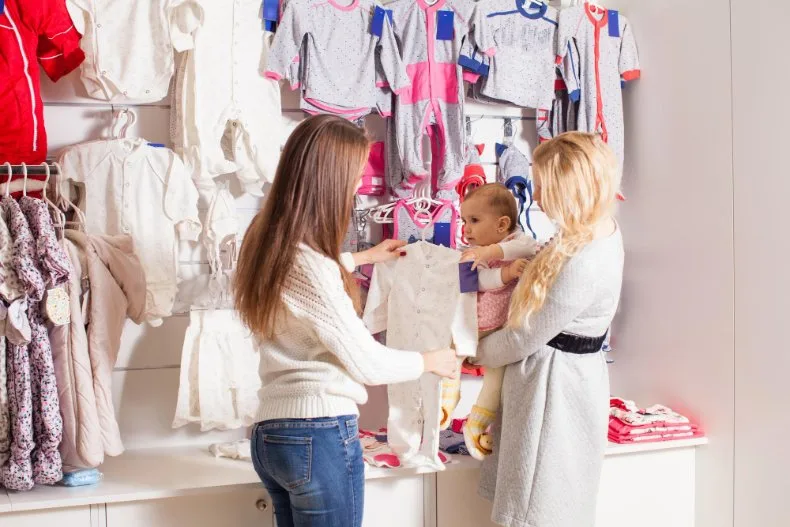
Understanding Toddler Growth Patterns
How many sizes do toddlers grow in a year? Most toddlers grow through 1-2 clothing sizes per year, but growth isn’t always consistent. Understanding growth patterns helps parents plan purchases more effectively.
| Age Range | Average Growth Rate | Sizing Impact | Shopping Strategy | Budget Planning |
|---|---|---|---|---|
| 18 months – 2 years | 3-4 inches/year | 2-3 sizes annually | Buy current season + next size | Frequent purchases needed |
| 2-3 years | 2-3 inches/year | 1-2 sizes annually | Buy for current + 6 months ahead | Moderate investment |
| 3-4 years | 2-3 inches/year | 1-2 sizes annually | Focus on current fit | More stable sizing |
| 4-5 years | 2-2.5 inches/year | 1 size annually | Can buy ahead for special occasions | Longest wear periods |
Growth Spurts and Sizing
How often do toddlers go up a size? Growth spurts can happen suddenly, with some children outgrowing clothes in just a few months. Watch for these signs that it’s time to size up:
Signs to Size Up
- Tight armholes or crotch area
- Sleeves or pants becoming too short
- Difficulty getting dressed independently
- Red marks on skin after wear
- Child complaints of discomfort
Signs of Good Fit
- Easy arm and leg movement
- No pulling or binding anywhere
- Comfortable waistband placement
- Appropriate sleeve and pant length
- Room for growth without being baggy
Comfort Considerations
Comfort is crucial for active toddlers who are constantly moving, playing, and exploring. Choose stretchy fabrics and designs that accommodate their activity level.
Fabric Recommendations by Activity
- Everyday wear: Cotton blends for breathability and durability
- Active play: Moisture-wicking synthetics
- Sleep: Natural fibers for temperature regulation
- Cold weather: Merino wool base layers
- Hot weather: Lightweight cotton or bamboo
Is it better to size up for toddler clothes? Generally, a proper fit is best, but consider sizing up if your child is between sizes, experiencing rapid growth, or if you need the clothes to last through a season.
Brand Variations and Shopping Tips
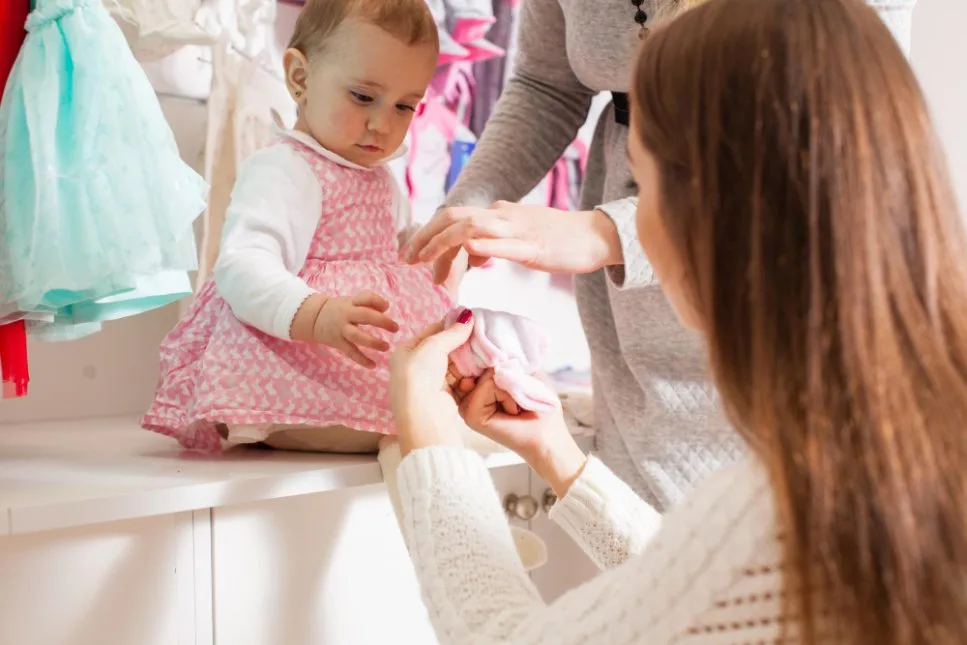
Understanding Brand Differences
Sizing varies significantly between brands, even for the same labeled size. Understanding these differences helps parents make better purchasing decisions and avoid returns.
| Brand Category | Sizing Tendency | Quality Level | Price Range | Best For |
|---|---|---|---|---|
| Budget Retailers | Runs larger/generous | Basic quality | $ | Rapid growth periods, play clothes |
| Mid-Range Brands | Generally true to size | Good quality | $ | Everyday wardrobe staples |
| Premium Brands | True to size, detailed charts | High quality | $$ | Special occasions, longevity |
| International Brands | Varies widely by origin | Variable | $-$$ | Unique styles, specific needs |
Smart Shopping Strategies
Money-Saving Tips for Toddler Clothing
- End-of-season sales: Buy next year’s winter coats in spring
- Quality basics: Invest in well-made essentials, save on trendy pieces
- Hand-me-downs: Great for rapidly outgrown items
- Size swaps: Exchange with other parents in your community
- Consignment shopping: High-quality items at lower prices
- Online returns: Check return policies before purchasing
When Shopping Online vs In-Store
Online Shopping Tips
- Read customer reviews for fit feedback
- Check measurement charts carefully
- Understand return policies
- Order multiple sizes if unsure
- Save size charts for future reference
In-Store Shopping Benefits
- Feel fabric quality before buying
- Check construction and safety features
- Try on similar styles for fit
- Ask staff about sizing tendencies
- Immediate gratification, no shipping wait
When shopping for toddler clothing, consider visiting physical stores for basic measurements and brand familiarity, then shopping online for better selection and prices.
Size Progression: From Preemie to Kids
Complete Sizing Timeline
Understanding the complete progression from infant to kids’ sizes helps parents prepare for transitions and understand what comes next.
| Size Category | Size Range | Age Range | Key Features | Next Transition |
|---|---|---|---|---|
| Preemie | P, NB | Birth – 3 months | Extra small for early/small babies | 0-3 months |
| Infant | 0-3M to 24M | 3 months – 2 years | Month-based, baby proportions | 2T (toddler sizing) |
| Toddler | 2T – 5T/6T | 18 months – 5.5 years | Diaper-friendly, active wear | Size 4/5/6 or XS kids |
| Kids/Youth | 4 – 16/18 | 4 years – teenage | Slimmer, longer proportions | Junior or adult sizes |
Critical Transition Points
24M vs 2T: What’s the Difference?
What is the difference between 18-24 and 2T? This is one of the most confusing transitions for parents:
24 Months (24M)
- Baby/infant category
- Slimmer, more fitted cut
- Shorter torso length
- Less diaper room
2T (Toddler)
- Toddler category
- Roomier cut for active play
- Longer torso for growth
- Extra diaper/pull-up room
Is 18-24 months the same as 2T? No, though they fit similar-aged children. 24M maintains baby proportions while 2T introduces toddler-specific features.
5T to Kids: The Big Transition
What comes after a toddler? After the toddler stage (and 5T sizing), children move into “big kid” or “youth” categories with different sizing systems.
What Age Transitions Occur?
- What age is a toddler? Typically 1-3 years medically, but clothing extends to age 5-6
- What age is large in children’s clothes? Kids’ Large typically fits ages 10-12
- Is 8 still a little kid? In clothing terms, size 8 is “big kid” not “little kid”
Special Sizing Categories
What size is 6X in kids? Size 6X is typically a bridge size between toddler and regular kids’ sizing, offering a roomier fit than regular size 6 but not as roomy as toddler cuts.
What size is 14 in children’s clothes? Size 14 is a large kids’/youth size, typically fitting children aged 11-14 years, representing the upper end of children’s sizing before transitioning to adult sizes.
Troubleshooting Common Sizing Problems
Between-Size Solutions
When children fall between sizes, parents face difficult decisions. Here are strategies for common scenarios:
| Scenario | Recommended Solution | Reasoning | Alternative Options |
|---|---|---|---|
| Between 2T and 3T | Choose 3T | Rapid growth at this age | Buy both for different seasons |
| Between 4T and 5T | Consider child’s growth pattern | Growth slows around age 4 | Current size may last longer |
| Between 5T and size 6 | Try both cuts | Different proportions matter | May need different sizes for different items |
| Tall but light child | Size up for length | Height is harder to accommodate | Look for adjustable waistbands |
Brand Inconsistency Solutions
Dealing with Sizing Variations
- Keep a sizing journal: Record which brands run large/small
- Measure consistently: Use the same tape measure and methods
- Read reviews: Other parents often mention sizing issues
- Start with basics: Test brand sizing with simple items first
- Use exchanges: Don’t hesitate to exchange for better fit
Seasonal Transition Challenges
Many parents struggle with buying for future seasons. Here’s how to navigate these challenges:
Buying Ahead Strategies
- Buy outerwear 1 size up
- Stick to current size for undergarments
- Choose adjustable items when possible
- Focus on classic styles that won’t date
Growth Spurt Management
- Keep receipts for exchanges
- Buy fewer expensive items
- Invest in quality basics only
- Have backup plans for rapid growth
Frequently Asked Questions
What size does toddler clothing stop?
Toddler clothing typically stops at size 5T, though some brands offer 6T. After this, children transition to regular kids’ sizes starting with 4, 5, or 6, depending on the brand.
What’s the biggest size in toddler clothes?
The biggest standard toddler size is 5T. Some brands extend to 6T, but 5T is the most common maximum size before transitioning to kids’ clothing.
What size does a toddler go up to?
Toddlers typically wear sizes 2T through 5T, covering ages approximately 18 months to 5.5 years, depending on the child’s growth rate and body type.
What is the end of toddler size?
The end of toddler sizing is typically 5T, with some brands offering 6T. After toddler sizes, children move to regular kids’ sizes which start around size 4-6.
What age fits a size 7 toddler?
There is no “size 7 toddler.” Toddler sizes end at 5T or 6T. Size 7 is a kids’ size that typically fits children aged 6-7 years who have moved beyond toddler proportions.
What’s after a toddler size 11?
There is no toddler size 11. Toddler sizes use the “T” designation (2T-5T). Size 11 would be in the kids’/youth category, and after that would come size 12, then eventually adult sizes.
Do toddler sizes go by age?
Toddler sizes are designed with age in mind (2T for 2-year-olds, etc.), but actual fit depends more on height and weight. Always check measurements rather than relying solely on age.
How high do toddler sizes go?
Standard toddler sizes go up to 5T, with some brands extending to 6T. This typically covers children from 18 months to about 5.5 years old.
What size is a toddler vs big kid?
Toddler sizes (2T-5T) are designed for children who may still wear diapers and need extra room for movement. Big kid sizes (typically 4-16) are cut slimmer and longer, assuming the child is potty trained.
What comes after 5T in toddler sizes?
After 5T, children transition to regular kids’ sizes. The next sizes are typically 6, 6X, or XS in kids’ clothing, depending on the brand.
How fast do kids grow from 2T to 3T?
Most children take 6-12 months to grow from 2T to 3T, but this varies greatly. Some fast-growing children might outgrow 2T in 3-4 months, while others might wear it for over a year.
What age does 3T fit?
3T typically fits children aged 2.5-3.5 years, but this depends on the child’s height and weight. Some tall 2-year-olds or petite 4-year-olds might also wear 3T comfortably.
What age does 2T fit?
2T typically fits children aged 18 months to 2.5 years, though individual children may wear this size outside this age range depending on their growth patterns.
What stage should a 3 year old be at?
A 3-year-old is typically in the active toddler stage – walking confidently, climbing, starting potty training, and developing independence. Clothing-wise, they usually wear 3T, though some may still be in 2T or have moved to 4T.
Is 3T the same as 3Y?
3T and 3Y (3 years) are very similar but may have slight differences. 3T specifically indicates toddler proportions with diaper room, while 3Y might be cut slightly slimmer. Many brands use these terms interchangeably.
What size is a toddler size 8?
There is no “toddler size 8.” Toddler sizes end at 5T/6T. Size 8 is a kids’ size that typically fits children aged 7-8 years, well beyond the toddler stage.
Do kids’ sizes go up to 7?
Yes, kids’ sizes typically range from 4 up to 16 or 18, so size 7 is definitely available in kids’ clothing. This usually fits children around 6-7 years old.
What age does size 11 fit?
Size 11 in kids’ clothing typically fits children aged 10-11 years. This is a large kids’/youth size, far beyond toddler sizing.
What are all the toddler sizes?
All standard toddler sizes are: 2T, 3T, 4T, and 5T. Some brands also offer 6T. These cover approximately 18 months to 5.5 years, depending on the child’s growth.
What age do toddlers slow down?
Growth typically slows around age 4-5, which is why children often wear 4T and 5T for longer periods than earlier toddler sizes. This coincides with the transition to more stable kids’ sizing.
Can a size 4 in clothing fit a 5 year old?
Yes, depending on the child’s size. A petite 5-year-old might wear size 4 kids’ clothing, while others might wear size 6 or larger. Always go by measurements rather than age.
Is next 3 years 2/3 or 3/4?
UK brand “Next” sizing can be confusing. “3 years” would typically correspond to ages 2.5-3.5, similar to US 3T. Check their specific size chart as UK brands may vary.
What age does a size 4 toddler fit?
Size 4T typically fits children aged 3.5-4.5 years, though this varies by individual growth patterns. Some children wear 4T outside this age range.
What’s after toddler size?
After toddler sizes (2T-5T), children move to kids’ or youth sizes, typically starting with size 4, 5, 6, or XS, depending on the brand and the child’s measurements.
Conclusion
Essential Points to Remember
- Maximum toddler size: Most brands stop at 5T, with some offering 6T
- Transition timing: After 5T, children move to kids’ sizes (4, 5, 6, or XS)
- Fit differences: Toddler sizes provide extra diaper room and shorter proportions
- Safety first: Always prioritize CPSC-compliant clothing with secure closures
- Growth planning: Most toddlers outgrow 1-2 sizes per year
- International sizing: European sizes use height measurements, often requiring size adjustments
- Brand variations: Sizing differs significantly between manufacturers
- Seasonal considerations: Factor in layering needs and climate requirements
Shopping Recommendations
When shopping for toddler clothes, parents should prioritize fit over age recommendations, always checking height and weight measurements against brand size charts. Invest in quality basics that will withstand frequent washing and active play, while saving money on trendy pieces that will quickly be outgrown.
For safety, choose clothing with secure fastenings, avoid items with choking hazards, and look for safety certifications like Oeko-Tex or CPSC compliance marks. When in doubt between sizes, consider the child’s growth rate, the season, and the specific garment type before making a decision.
Understanding Growth and Development
Remember that toddler sizing serves a specific developmental stage. Children in toddler sizes are typically learning independence, may still be in diapers or pull-ups, and are extremely active. The clothing is designed to accommodate these needs with features like:
- Extra room for diaper bulk and movement
- Shorter proportions appropriate for toddler body shapes
- Safety features that prevent choking and entanglement
- Durable construction for rough play
- Easy-care fabrics for frequent washing
Planning for the Future
Smart parents plan ahead by purchasing one size larger for items like essential wardrobe pieces and outerwear that can accommodate growth spurts. However, avoid buying too far ahead, as children’s preferences and body proportions can change significantly over time.
Final Sizing Success Tips
- Measure your child every 3-4 months to track growth patterns
- Keep a sizing journal noting which brands work best for your child
- Don’t stress about age vs. size mismatches – fit matters more than labels
- Consider your child’s activity level when choosing between sizes
- Invest in quality durable clothing for frequently worn items
- Build relationships with retailers who have good return policies
- Join parent groups to share sizing tips and clothing swaps
- Use our size comparison tool when shopping different brands
Looking Ahead: The Transition to Kids’ Sizes
As children outgrow toddler sizes, parents will notice several changes. Kids’ clothing assumes children are potty trained, more independent with dressing, and have different body proportions. The transition usually happens between ages 4-6, but can vary significantly based on individual development.
Understanding toddler clothing sizes helps parents make informed decisions that prioritize comfort, safety, and value. This comprehensive guide provides the foundation for successful toddler clothing purchases, ensuring children have appropriate, safe, and comfortable clothing throughout their active developmental years.
Remember that every child grows differently, and sizing is just a starting point. Regular measurements, attention to comfort signs, and flexibility in sizing choices will ensure toddlers have clothing that supports their development, protects their safety, and allows them to explore their world with confidence.
Quick Reference: Toddler Sizing at a Glance
18m-2.5yr
32-34″ tall
2.5-3.5yr
35-37″ tall
3.5-4.5yr
38-40″ tall
4.5-5.5yr
41-43″ tall
After 5T: Transition to kids’ sizes 4, 5, 6, or XS

